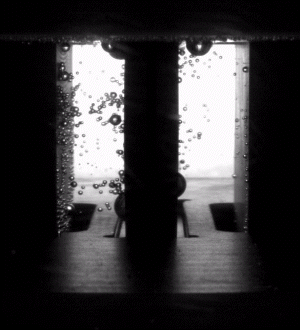The availability of oxygen beyond Earth is a crucial factor for human exploration of space. We do need it to breathe after all. Already, there have been tests for extracting the precious element both in microgravity and on Mars. There is a major challenge when it comes to microgravity production, and researchers now report an effective solution that doesn’t require any new tech, just some good magnets.
The rest of this article is behind a paywall. Please sign in or subscribe to access the full content.
A very handy source of oxygen is water. While we do not go extracting water from comets or the dark craters of the Moon (at least not yet), being able to extract oxygen from the precious liquid can be mission-critical. The way to extract it is simple: a process known as electrolysis. Electrodes are placed in water, and the electricity separates oxygen from hydrogen, and bubbles of these gases form on the electrodes.
On Earth, the bubbles, being less dense than the surrounding liquid, just float up. This doesn’t work in space. Bubbles do not float up as there is no up. The current system uses a centrifuge to pull the oxygen out of the water. The system is no longer small and simple, but needs extra mechanical setup and more electricity to work.
The team focused instead on using magnetism to separate the bubbles from the electrodes, using commercially available neodymium magnets. Thanks to a phenomenon called diamagnetism, the team can guide the bubbles to specific collection points. The interactions between the electric currents generated by the electrolysis in the water and the magnetic field can produce a spinning motion, similar to the mechanically induced.

Magnets make oxygen production in microgravity way more efficient.
Image Credit: Ö. Akay et al. Nature Chemistry 2025 / Georgia Institute of Technology
“One may think that extracting gas bubbles from liquids in space is as simple as opening a can of soda here on Earth. However, the lack of buoyancy makes the extraction process incredibly difficult, undermining the design and operation of oxygen production systems,” co-corresponding author Álvaro Romero Calvo, an assistant professor at Georgia Tech, said in a statement.
“In this paper, we demonstrate that two largely unexplored magnetic interactions – diamagnetism and magnetohydrodynamics – provide an exciting pathway to solve this problem and develop alternative oxygen production architectures.”
The team tested this by dropping a system to simulate microgravity from a bespoke tower located at the Center of Applied Space Technology and Microgravity (ZARM) at the University of Bremen. The tower is 146 meters (479 feet) high; this allowed 9.3 seconds of microgravity experiment time. The system with the neodymium magnets released 240 percent more oxygen.
“After four years of hard work, showing that magnetic forces can control electrochemical bubbly flows in microgravity is an exciting step towards more efficient and reliable spacecraft life support systems. Working with our collaborators and stakeholders has been incredibly fulfilling, and we can’t wait for the next steps,” said Romero-Calvo.
The work is part of an investigation on a magnetohydrodynamics oxygen production system that could be used on a Mars transit mission, for which Romero-Calvo has recently been awarded funding.
A paper describing the result is published in the journal Nature Chemistry.
Source Link: Everyday Magnets Could Be The Surprising Key To Producing Oxygen In Space